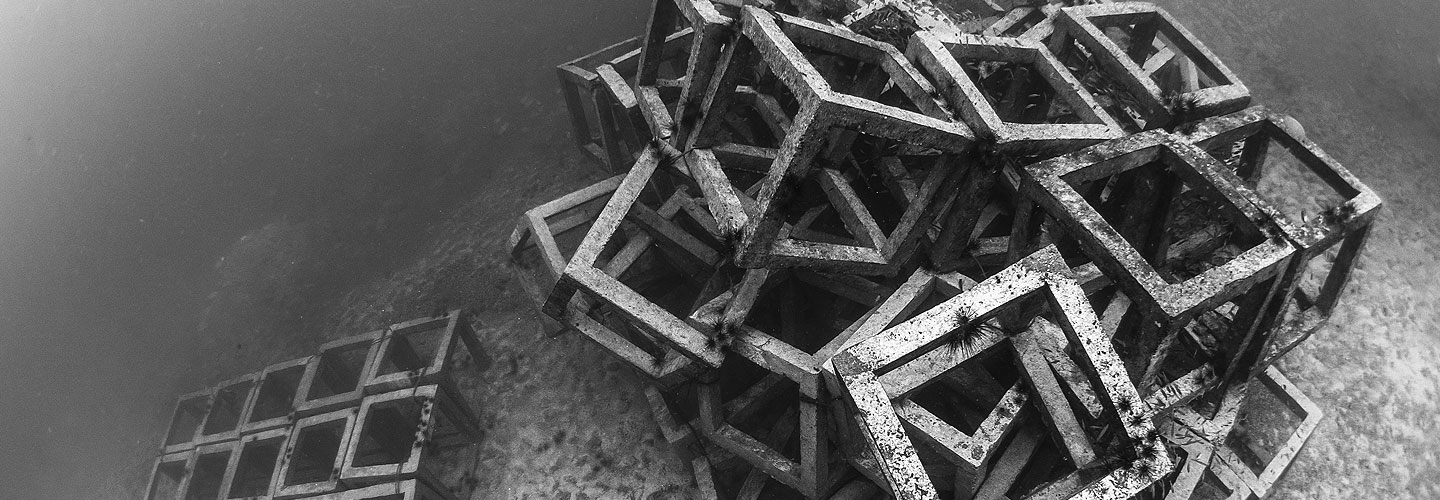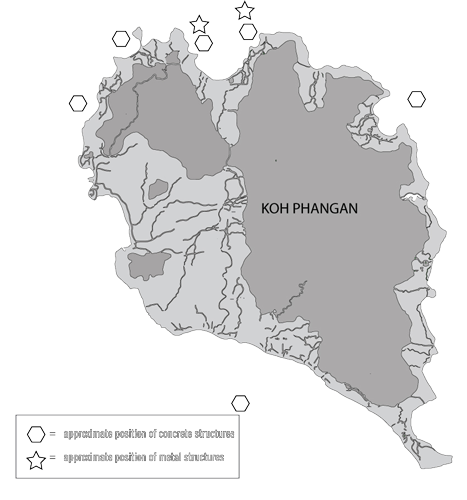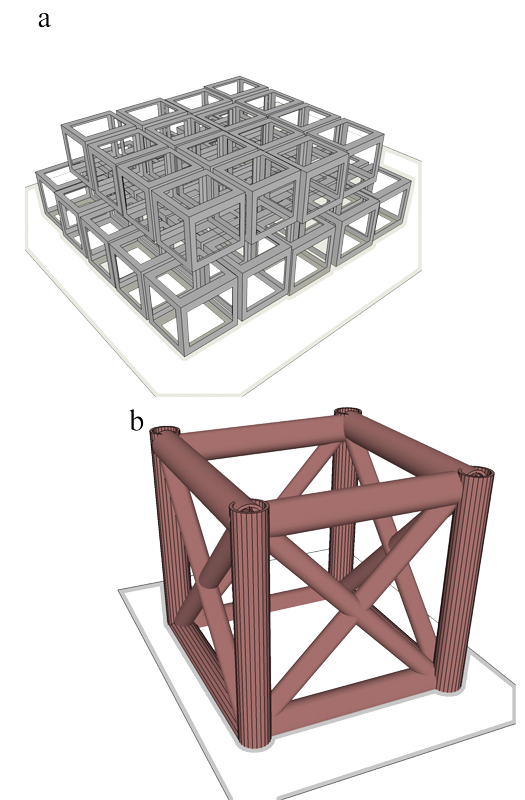Artificial Reefs
An artificial reef is a human-made underwater structure, typically built to promote marine life in areas with a generally featureless bottom, to control erosion, block ship passage, or improve surfing.
Many reefs are built using objects that were built for other purposes, for example by sinking oil rigs (through the Rigs-to-Reefs program), scuttling ships, or by deploying rubble or construction debris. Other artificial reefs are purpose built (e.g. the reef balls) from PVC or concrete. Shipwrecks may become artificial reefs when preserved on the sea floor. Regardless of construction method, artificial reefs generally provide hard surfaces where algae and invertebrates such as barnacles, corals, and oysters attach; the accumulation of attached marine life in turn provides intricate structure and food for assemblages of fish.
Artificial Reefs in Thailand
In order to develop Thailand’s AR program, the current distribution of ARs and natural reefs was investigated. Also the materials used for AR construction were studied. A high distribution of ARs was found in coastal areas (depth ≤30 m) that lacked natural reefs. Of the total sea areas, shallow water areas (depth ≤10 m) showed to have a higher distribution of ARs with a density ratio of 0.06. AR program’s trends from various coastal countries showed that the data presented a wide field of studies on AR in numerous countries, ranging from structure research to physical, biological, and economical monitoring. In comparison, however, a relatively narrow range of studies have been done for Thailand, most of which were concerned with productivity and ecological success. The data also reflected the use of various materials and types of structures in AR construction in other countries, but this variety was not visible in that of Thailand. In addition, while the use of a variety of structures has enabled many countries to deploy ARs in deeper waters to enhance and restore resources, Thailand’s AR deployment was shown to only have a high distribution and density ratio of ARs in shallow areas because of the use of relatively primitive structures and deployment methods. Upon comparison of AR programs in various countries, it seems that Thailand lacks the necessary technology, future plans and information about recent trends. Shallow waters (depth ≤10 m) will undoubtedly be important AR deployment sites for the restoration and enhancement resources, but in order to counteract the present environmental damages and decline of marine resources, it will be necessary to conduct a much wider field of studies. In addition, more effective deployment plans should be implemented to focus on deeper waters (depth >10 m), which may be beneficial for the future AR program development. According to previous studies, AR development in Thailand should be improved with more effective methods of structure construction, planning, and techniques in order to restore the environment and the coastal resource.
http://www.sciencedirect.com/science/article/pii/S0964569111001839
Artificial Reefs on Koh Phangan
We have been experimenting with different nursery systems since 2011. The results were mixed but in 2013, we found a working system that we’re currently redeveloping in-situ. Koh Phangan has very little branching coral remaining, the ecosystem is dominated by massive, resistant species, which survived the 2010 bleaching event. Our efforts concentrate on these relatively fragile species, as their canopy is the key habitat for small reef fish.

Structures deployed

%
Working systems
Artificial Reef Systems
Different systems have been developed over the years, the use depends on depth, wave regime, substrate type and the coral growth form. Generally, a nursery uses the corals capability for asexual reproduction. A coral polyp can “clone” itself, creating large colonies from a single individual. We use rescued fragments, which might have been created by fish, storms or humans, and carefully coax them into growing on a new substrate. Our results have been surpringly good, with growth rates of up 0.35 mm per week, and survival rates between 95 and 97 %.
Fish Aggregating Devices (FAD)
A fish aggregating (or aggregation) device (FAD) is a man-made object used to attract ocean going pelagic fish such as marlin, tuna and mahi-mahi (dolphin fish). They usually consist of buoys or floats tethered to the ocean floor with concrete blocks. Over 300 species of fish gather around FADs. FADs attract fish for numerous reasons that vary by species.
Drifting FADs are not tethered to the bottom and can be natural objects such as logs or man-made.
Moored FADs occupy a fixed location and attach to the sea bottom using a weight such as a concrete block. A rope made of floating synthetics such as polypropylene attaches to the mooring and in turn attaches to a buoy. The buoy can float at the surface (lasting 3–4 years) or lie subsurface to avoid detection and surface hazards such as weather and ship traffic. Subsurface FADs last longer (5–6 years) due to less wear and tear, but can be harder to locate. In some cases the upper section of rope is made from heavier-than-water metal chain so that if the buoy detaches from the rope, the rope sinks and thereby avoids damage to passing ships who no longer use the buoy to avoid getting tangled in the rope.[5]
Smart FADs include sonar and GPS capabilities so that the operator can remotely contact it via satellite to determine the population under the FAD
Fish tend to move around FADs in varying orbits, rather than remaining stationary below the buoys. Both recreational and commercial fisheries use FADs.
Before FADs, commercial tuna fishing used purse seining to target surface-visible aggregations of birds and dolphins, which were a reliable signal of the presence of tuna schools below. The demand for dolphin-safe tuna was a driving force for FADs.[1]
Concrete Cubes
In this nursery system, ropes get un-entwined and fragments are stuck in the resulting opening. This method is very sturdy and produces great results, but removing the grown colonies creates damage, as the coral tissue tends to engulf the rope.
Other Material
Concrete or metal structures offer the best protection from storm surges, but are prone to sedimentation and predation, as the structures are readily accessible to Drupella cornus or Crown of Thorns Starfish (COTS)

The big catch:
Coral nurseries are using the asexual reproduction capabilities of branching coral, and thereby circumvent the genetic recombination that happens during natural coral propagation.
If fragments are not chosen carefully, the project is not carefully monitored, or a large area is restored with few fragments, the method is actively reducing genetic diversity and reduces local coral reef resilience. Which might be worse than the original situation.
JOIN US IN OUR MISSION
Read More
We’re currently researching the effectiveness of the Artificial reefs at Koh Phangan
Access the full article here. Proposal_Artifial_Reefs_KPG


